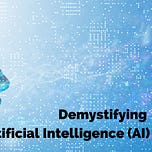Artificial Intelligence (AI) often sounds like science fiction, but at its core, it’s a set of techniques and technologies designed to simulate human-like thinking and learning in machines. Imagine AI as a toolbox filled with different methods that allow computers to perform tasks we typically associate with human intelligence, like recognizing images, understanding speech, making decisions, and even generating creative content. To make sense of AI, it helps to consider its most common types and the specific ways they touch our lives.
One major type of AI is *Machine Learning (ML)*, where a computer improves its performance by learning from data. In other words, instead of telling the computer exactly what to do, we give it examples and allow it to find patterns on its own. For instance, a music streaming service like Spotify uses machine learning to recommend songs you might enjoy based on the music you’ve listened to in the past. It looks for patterns in your listening habits and compares them to the preferences of other users with similar tastes to create a playlist just for you.
Within machine learning, *deep learning* takes things even further. Inspired by the human brain’s structure, deep learning uses artificial neural networks—complex structures of algorithms that can process large amounts of data. This approach enables applications like image recognition in Google Photos. When you upload a photo of your dog, the neural network identifies that it’s an image of a dog and even classifies it by breed, thanks to the millions of images it has analyzed in the past.
*Natural Language Processing (NLP)* is another fascinating area of AI that allows machines to understand and generate human language. A practical example is the voice assistant on your phone, such as Siri or Google Assistant. When you ask, “What’s the weather like tomorrow?” NLP algorithms analyze your question, interpret the words, and convert your request into actions that fetch the relevant weather data for you. This technology also powers chatbots you encounter on websites, where they can answer questions and provide basic customer service, freeing up time for human representatives to handle more complex inquiries.
Then there’s *Computer Vision*, which allows computers to "see" and make sense of visual information. Imagine a self-driving car navigating a busy street; it needs to recognize stop signs, pedestrians, other cars, and lane markings. Computer vision, combined with machine learning, makes this possible by processing images from the car’s cameras and making split-second decisions to keep passengers safe. Similarly, apps like Google Lens let you point your smartphone camera at a plant or a type of food and immediately identify it, using computer vision to match the visual input with a massive database of images.
Reinforcement learning is a different kind of machine learning often used in gaming and robotics. Instead of learning from data, it learns from experience by receiving rewards or penalties for actions. Think of a robot in a warehouse tasked with organizing shelves. Through trial and error, it learns the most efficient path to complete its tasks without crashing into shelves or slowing down productivity. This technique is also behind some of the AI players in complex video games like chess or Go, where the AI learns strategies by playing thousands of rounds, each time adjusting based on what worked or didn’t.
AI also plays a behind-the-scenes role in areas we might not immediately notice. When you type an email in Gmail, for example, AI-driven *predictive text* suggests phrases as you type, saving time and reducing errors. Online shopping sites use AI to analyze your browsing history and present items you’re likely to buy, making the experience feel more personalized. Even financial institutions rely on AI for fraud detection, where algorithms look for unusual spending patterns that could indicate unauthorized transactions, protecting consumers and banks from potential losses.
As AI continues to evolve, it will become even more embedded in our everyday lives, handling tasks from scheduling appointments to driving us to work. It’s not a magic wand but rather a powerful tool that, when applied thoughtfully, can make life more convenient, efficient, and even enjoyable. Understanding AI as a collection of techniques that mimic human thinking helps demystify its role and recognize its potential and limitations alike.
Demystifying AI: How It's Shaping Our Daily Lives
This briefing document analyzes provided sources to explore the core concepts of Artificial Intelligence (AI) and its impact on various aspects of our daily lives.
AI: A Toolbox Mimicking Human Intelligence
AI isn't just a futuristic concept; it's a collection of techniques enabling machines to perform tasks that traditionally required human intelligence. This includes:
Recognizing images: "When you upload a photo of your dog, the neural network identifies that it’s an image of a dog and even classifies it by breed."
Understanding speech: Think of voice assistants like Siri or Google Assistant. They use NLP to "analyze your question, interpret the words, and convert your request into actions".
Making decisions: Self-driving cars "make split-second decisions to keep passengers safe" using computer vision and machine learning.
Generating creative content: While not explicitly mentioned in the sources, AI is increasingly being used for tasks like composing music and writing text.
Types of AI and Their Applications
Several types of AI contribute to these capabilities, each with unique strengths and applications:
Machine Learning (ML): This involves training computers to learn from data. For example, Spotify "uses machine learning to recommend songs you might enjoy based on the music you’ve listened to in the past".
Deep Learning: A subset of ML using artificial neural networks inspired by the human brain to process vast amounts of data, enabling advanced image recognition and other complex tasks.
Natural Language Processing (NLP): Focuses on enabling machines to understand and generate human language, powering voice assistants, chatbots, and predictive text features.
Computer Vision: Enables computers to "see" and interpret visual information, crucial for applications like self-driving cars and image identification apps like Google Lens.
Reinforcement Learning: This technique involves learning from experience through rewards and penalties, making it ideal for optimizing tasks in robotics and developing advanced AI players in games like chess and Go.
AI: Transforming Everyday Experiences
The sources highlight numerous ways AI is already embedded in our daily routines:
Personalization: AI delivers tailored experiences in music streaming services, e-commerce platforms, and other applications.
Automation: AI automates tasks like email writing with predictive text, freeing up time for more complex activities.
Assistance: AI provides valuable assistance through voice assistants, chatbots, and image identification apps.
Optimization: AI optimizes complex processes in warehouse robotics, game playing, and fraud detection in financial institutions.
Looking Ahead
As AI continues to advance, it promises to become even more integrated into our lives. The potential applications are vast, ranging from personalized healthcare and education to smart homes and cities. However, it's important to recognize AI's limitations and ensure its development and application are guided by ethical considerations.
Key Takeaway:
AI is not a monolithic entity but rather a diverse set of tools with the potential to revolutionize how we live, work, and interact with the world around us. Understanding its various forms and applications is crucial for harnessing its power and navigating its future impact.
Everyday AI: Understanding the Tech Behind the Scenes
Quiz
Instructions: Answer the following questions in 2-3 sentences each.
What is the core concept behind Artificial Intelligence (AI)?
Differentiate between Machine Learning (ML) and Deep Learning.
Explain how Spotify leverages AI to enhance user experience.
Describe how Natural Language Processing (NLP) enables voice assistants like Siri to function.
How does Computer Vision contribute to the safety of self-driving cars?
What role does reinforcement learning play in warehouse robotics?
Provide an example of how AI simplifies everyday tasks through automation.
Explain the concept of predictive text and its benefits.
How does AI contribute to personalized online shopping experiences?
In the context of finance, how is AI used to protect consumers?
Answer Key
AI aims to replicate human intelligence in machines, enabling them to perform tasks like problem-solving, decision-making, and learning. It involves a collection of techniques that mimic cognitive processes.
Machine Learning allows computers to learn from data without explicit programming, improving performance over time. Deep Learning, a subset of ML, uses artificial neural networks inspired by the human brain to analyze vast amounts of data for complex pattern recognition.
Spotify utilizes Machine Learning to analyze user listening history and compare it to others with similar tastes. This allows the platform to generate personalized music recommendations, enhancing user satisfaction.
NLP enables voice assistants to understand and interpret human speech. When you ask Siri a question, NLP algorithms analyze the words, extract meaning, and convert the request into actions, such as providing weather information.
Computer Vision allows self-driving cars to "see" and interpret their surroundings. By processing images from cameras, they can identify stop signs, pedestrians, and other vehicles, making real-time decisions to ensure safe navigation.
Reinforcement learning helps robots learn optimal strategies through trial and error. By receiving rewards for successful actions and penalties for mistakes, warehouse robots can optimize their paths and improve efficiency in completing tasks like organizing shelves.
AI-powered email features like predictive text automate the writing process by suggesting words and phrases as you type. This saves time, reduces errors, and streamlines communication.
Predictive text utilizes AI to anticipate the words a user intends to type. By suggesting phrases based on context and past usage, it speeds up typing, minimizes errors, and enhances the overall writing experience.
AI analyzes browsing history and purchase patterns to create personalized recommendations on e-commerce platforms. This helps shoppers discover products they are more likely to be interested in, enhancing customer satisfaction and potentially boosting sales.
AI algorithms analyze financial transactions for unusual patterns that may indicate fraudulent activity. This helps protect consumers from unauthorized charges and safeguards financial institutions against losses.
Essay Questions
Discuss the ethical considerations surrounding the increasing use of AI in everyday life.
Compare and contrast the strengths and weaknesses of different types of machine learning (e.g., supervised, unsupervised, reinforcement learning).
Analyze the potential impact of AI on the future of work, considering both positive and negative aspects.
Explain how AI can be used to address societal challenges in areas such as healthcare, education, and environmental sustainability.
Evaluate the role of regulation in ensuring responsible development and deployment of AI technologies.
Glossary
TermDefinitionArtificial Intelligence (AI)The simulation of human intelligence in machines, allowing them to perform tasks typically requiring human cognition.Machine Learning (ML)A type of AI where computers learn from data without explicit programming, improving performance with experience.Deep LearningA subset of ML using artificial neural networks to analyze vast amounts of data, enabling complex pattern recognition and tasks like image classification.Natural Language Processing (NLP)A branch of AI focused on enabling computers to understand, interpret, and generate human language.Computer VisionA field of AI that allows computers to "see" and interpret visual information from images and videos.Reinforcement LearningA type of ML where agents learn through trial and error, receiving rewards for successful actions and penalties for mistakes.Predictive TextAn AI-powered feature that suggests words and phrases as a user types, based on context and past usage.Fraud DetectionThe use of AI algorithms to identify unusual financial transactions that could indicate fraudulent activity.
Artificial Intelligence: Your Questions Answered
1. What is Artificial Intelligence (AI) in simple terms?
AI is essentially a collection of technologies that enable computers to perform tasks that typically require human intelligence. This includes abilities like problem-solving, decision-making, learning, and even creative tasks like generating art or music. Think of it as giving computers a set of tools to mimic how our brains work.
2. How does Machine Learning (ML) play a role in AI?
Machine Learning is a core part of AI where computers learn and improve from data without explicit programming. Instead of giving specific instructions, we feed the computer examples, and it identifies patterns and relationships within that data to make predictions or decisions.
Example: Spotify uses ML to analyze your listening history and recommend songs based on patterns found in your musical preferences and those of similar users.
3. What is Deep Learning, and how does it differ from Machine Learning?
Deep Learning is a specialized type of Machine Learning inspired by the structure of the human brain. It uses artificial neural networks, complex layers of algorithms, to analyze vast amounts of data. This allows for more sophisticated learning and insights.
Example: Google Photos employs deep learning to identify and classify images. It can recognize a photo of your dog and even determine the breed based on millions of images it has processed.
4. How does AI understand and interact with human language?
Natural Language Processing (NLP) is the branch of AI that deals with human language. It allows machines to understand, interpret, and generate text and speech.
Example: Voice assistants like Siri and Google Assistant rely on NLP to understand your questions and respond with relevant information.
5. What is Computer Vision, and how is it used in everyday life?
Computer Vision gives computers the ability to "see" and interpret visual information from images or videos. It enables machines to recognize objects, scenes, and even human faces.
Example: Self-driving cars use computer vision to identify traffic signs, pedestrians, and other vehicles, allowing them to navigate roads safely.
6. What is Reinforcement Learning, and how is it used in robotics and gaming?
Reinforcement Learning is a type of Machine Learning where an AI system learns through trial and error. It receives rewards for positive actions and penalties for negative ones, allowing it to refine its strategies over time.
Example: Robots in warehouses use reinforcement learning to optimize paths and efficiently organize shelves. AI players in games like chess use it to improve their gameplay through repeated matches.
7. How is AI used to personalize experiences and make them more convenient?
AI is used in various ways to personalize our experiences:
Music and shopping recommendations: Platforms like Spotify and Amazon use AI to suggest products and content based on your preferences and past behavior.
Predictive text: Features like Gmail's Smart Compose use AI to suggest phrases as you type, saving you time and effort.
8. Beyond everyday tasks, what are some other important applications of AI?
AI plays a significant role in areas like:
Fraud detection: Financial institutions use AI algorithms to identify unusual transactions and protect against fraud.
Healthcare: AI assists in medical diagnosis, drug discovery, and personalized treatment plans.
Scientific research: AI helps analyze complex data sets and accelerate discoveries in various fields.













